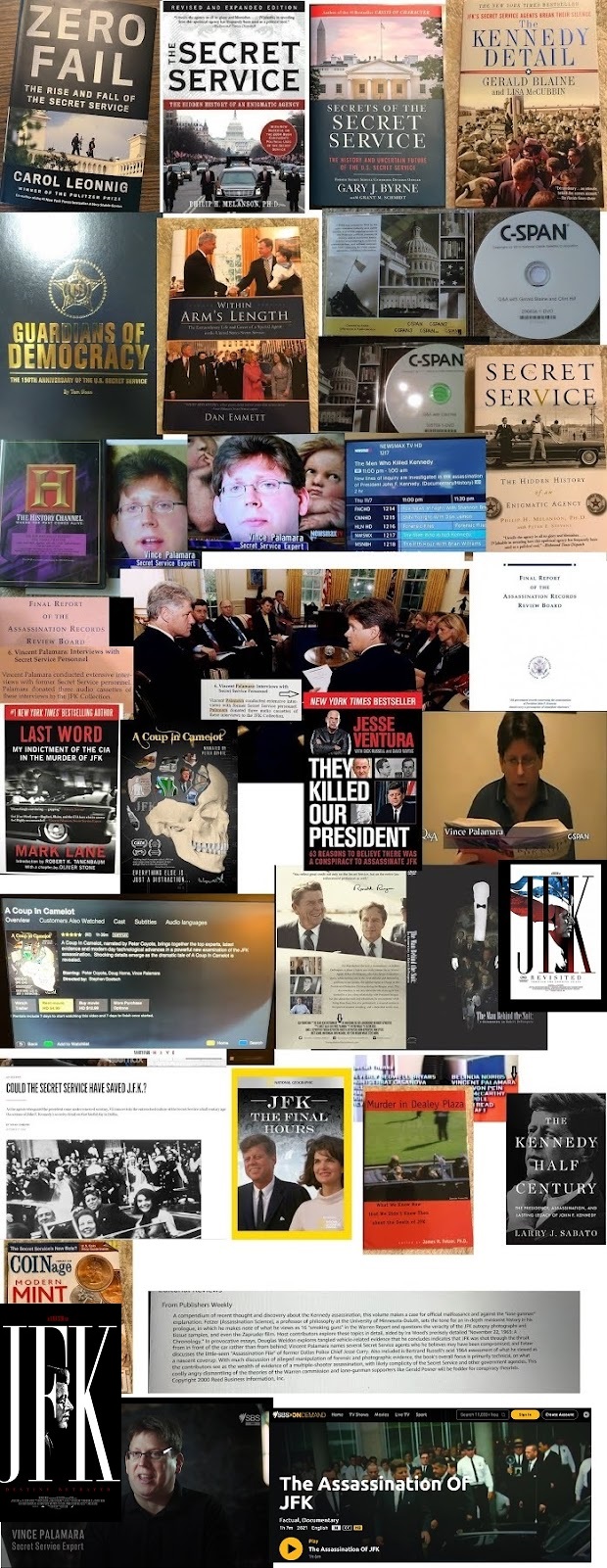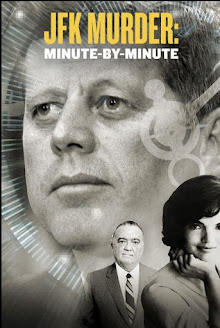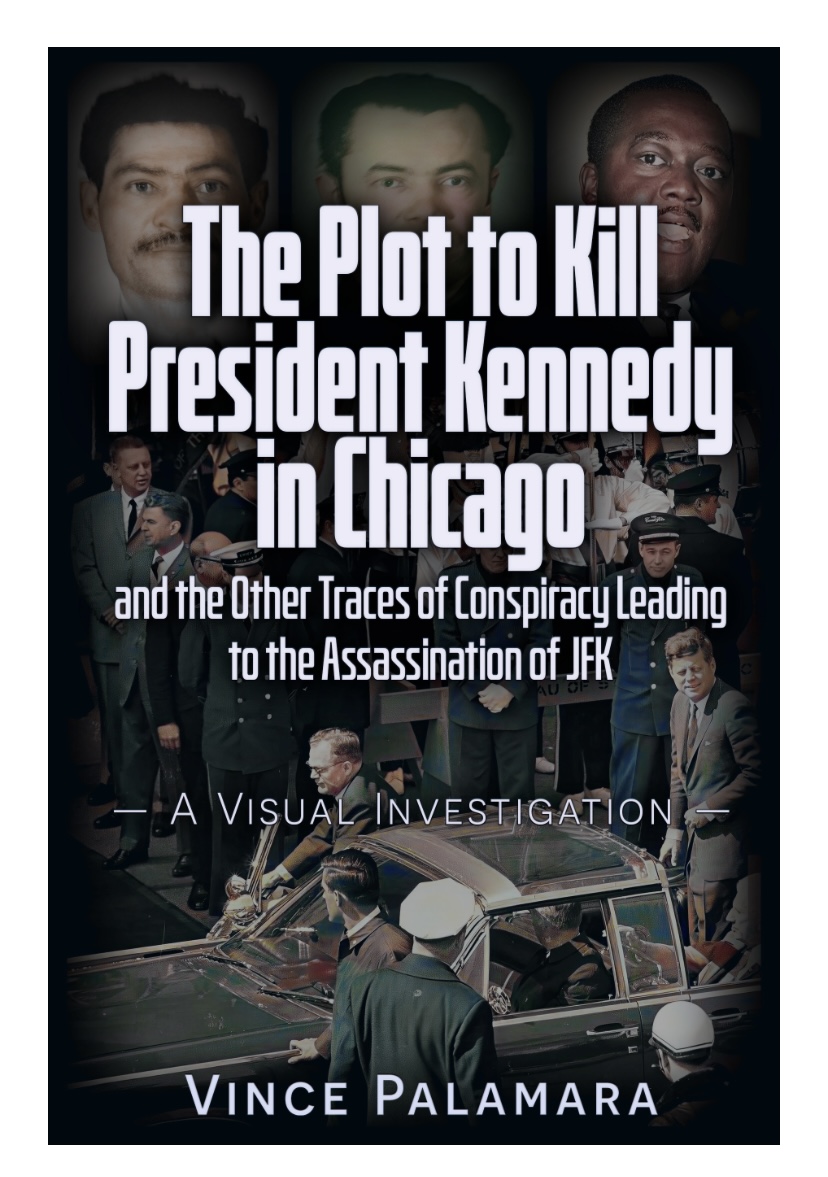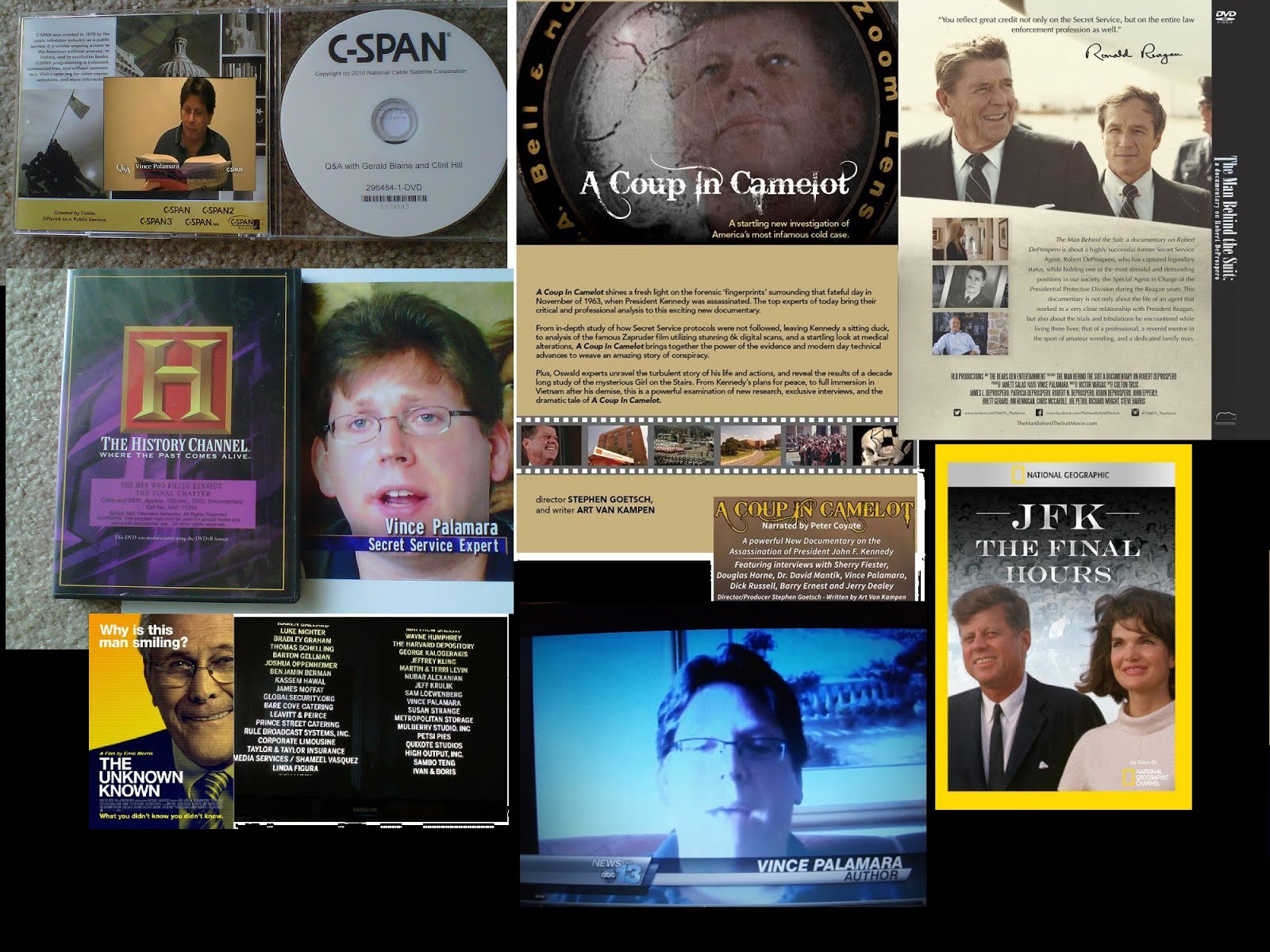The Vince Palamara JFK Pages
| ...
"Murder in ... Dealey Plaza" ... - A Book Review ... by Vince Palamara |
||
Yes, we have reached that point in time and the book is called "Murder in Dealey Plaza: What We Know Now that We Didn't Know Then about the Death of JFK", Edited by James H. Fetzer, Ph.D. (Peru, IL: Open Court Press, 2000). Simply put, in my learned opinion (warts and all), this is one of THE very finest books ever published on the JFK assassination, no small feat from an author who gave us 1998's "Assassination Science", a good but flawed work that engendered much controversy, mainly over its boastful, almost confrontational title (S-C-I-E-N-C-E), something akin to the ruckus over the titles of Posner's "Case Closed" (closed????) or Jim Moore's "Conspiracy of One" (an oxymoron by a moron). Many in the research community (NOT including this reviewer) took issue with the seeming self-puffery and overstatement of his first volume, especially in regard to the Zapruder film, a hot topic that greatly overshadowed the rest of the work. However, Fetzer has learned from his apparent 'mistakes'---by lowering the "me" factor and giving the controversial Z-film-is-altered issue shorter shrift, and his second book is so much the better for it. While no book is error-free or perfect in every way, with a couple of years (if not decades) of hindsight on his side and weightier contributions to the fore, Fetzer has compiled a masterful collection of essays that are sure to inspire and inform anyone and everyone even remotely interested in the crime of the 20th century. In baseball parlance, if "Assassination Science" was a respectable double down the middle, then "Murder in Dealey Plaza" is a grand slam; if only THIS work would have been first at bat (which just goes to show you: sometimes sequels ARE better)!
The work starts off with a nifty preface and prologue of "Smoking Guns" that, while not without minor fault in a few places, mainly on matters of perspective, truly delivers and excites the reader about what is to follow. You can tell right away that this is NOT just another "theory-and-speculation" book. In fact, one gets the impression of a courtroom brief, a summation of the hard,salient facts to be outlined with every turn of the page. In short, a very good start. If the goal was to make the (novice or jaded expert) reader interested in going further, Fetzer has succeeded so far.
Part I: The Day JFK Was Shot---
Next is an outstanding chronology of Novem,ber 22, 1963 by Ira David Wood III that succeeds as a kind of updated "The Day Kennedy Was Shot" [by Jim Bishop], only this time shorter, to the point, and more factual --and without the Oswald-did-it-alone bias. This chapter succeeds brilliantly as both a kind of "cliff notes" for the uninitiated to get the reader up to speed with the case AND as an interesting perspective on the fateful day interspersed with many new, unpublished details. While there are a few minor bones of contention included and a few areas of repetition, this chronology is the best I've ever seen. "59 Witnesses: Delay on Elm Street" (by this reviewer) follows and exposes the mass of witnesses who observed the presidential limousine, driven by Special Agent William R. Greer, either slow down or stop on Elm Street during the assassination (a testament to Secret Service incompetence or worse It also serves as grist for the mill for those who strongly feel that the Z film was altered in some fashion).
Part II: The Secret Service----
Douglas Weldon, J.D., explores in depth the fate of JFK's limousine from the night of November 22 onward, all the evidence it contained, and old and new testimony regarding the condition of the windshield, among other important factors. Again, as with the preceding essays (and, actually, ALL the works contained herein), this serves as both an excellent and comprehensive account of all that was known before AND much new evidence (including fresh interviews with never-before-contacted principals) that serves to strengthen the notion of conspiracy and cover-up, specifically regarding the death car. Weldon has done a truly masterful job here; I have no complaints. Next is a three-part section entitled, somewhat facetiously, "The Secret Service: On The Job In Dallas" (by this reviewer), and here we have documented, richly detailed writings (including insights from many interviews with heretofore unpublished principals: former agents & presidential aides) concerning the Secret Service, in general, and Palamara's top 3 suspects, in particular: ASAIC Floyd M. Boring (in charge of planning the Texas trip), ATSAIC Emory P. Roberts (commander of the follow-up car in Dallas), and the aforementioned Bill Greer. If the preface, prologue, and the detailed chronology helped flesh out the background, this part of the book (by Weldon and Palamara, concerning the actions and inactions of the Secret Service) helps to bring specific people and events to the fore, in the context of what the reader previously digested AND what is to follow for pretty much the rest of the work.
Part III: The Medical Evidence---
In my opinion, this is THE finest part of the book and is worth the price of admission just for this outstanding section alone. Seriously, I cannot rave about this section enough: a truly brilliant expose of the medical evidence---comprehensive, well-researched and documented; it is indeed breathtaking. Gary L. Aguilar, M.D., starts us off with his essay entitled "The Converging Medical Case for Conspiracy in the Death of JFK". Going further than any of his previous writings, Dr. Aguilar has done a commendable job in crystalizing and compiling ALL the salient descriptions, a?omalies, and conundrums related to this complex topic and provides ANSWERS that are understandable and quite satisfying; in short, imagine everything you've ever seen or read about the medical evidence, put it all together, include all the new revelations from the Review Board and fresh interviews (the strength and advantage of this year 2000 publication), and imagine that it is FINALLY conveyed in a fashion that is palatable to non-medical folk --- this is it!
Following this remarkable essay is one by David W, Mantik, M.D., Ph.D., entitled "Paradoxes of the JFK Assassination: The Medical Evidence Encoded"---the very same praise can be given to Dr. Mantik, but, rest assured, this is NOT just a rehash of what came before (by Aguilar or even by Mantik in previous books, including "Assassination Science". Along WITH Aguilar's piece, this is a groundbreaking, courtroom-ready dissertation that has no equal. Yes, I HAVE purposely left out a lot of the specific details of why I am so impressed with this section: read the book!
Part IV: ARRB Revelations---
Before the reader can catch his/ her collective breath after the awe-inspiring medical evidence essays that preceded this section, Douglas P. Horne, the Senior Analyst for Military Records on the Assassination Records Review Board (ARRB), delivers the one-two (three?) punch here. His first essay, entitled "Evidence of a Government Cover-Up: Two Different Brain Specimens in President Kennedy's Autopsy" -- a work that actually garnered some press in late 1998 --is comprehensively chronicled here with impressive results. As with the writings of Drs. Aguilar and Mantik, there is no way a sane person could finish reading Horne's essay and not believe in a conspiracy and cover-up in the death of JFK! Again, outstanding. Horne's second piece, "Interviews with Former NPIC Employees: The Zapruder Film in November 1963", contains the actual full-length interview summaries and exhibits from the ARRB's interviews with these important and previously-unknown principals. This section serves as a useful backdrop for the following controversial section...
Part V: The Zapruder Film---
On the one hand, this is, in my opinion, the weakest part of the book because of its brevity, better writing, and its food for thought, it surpasses what was espoused on this controversial subject in Fetzer's last volume (as well as in "Bloody Treason" by Noel Twyman and in Livingstone's "Killing Kennedy"). In other words, I have mixed emotions about this section. Starting off, we have a 16-page color insert by former HSCA consultant Jack White entitled "The Great Zapruder Film Hoax": eye-catching, attractive, but, ultimately (again, this reviewer's opinion) not totally convincing in regard to the alleged anomalies in the Zapruder film --and in other films and photos. A valiant effort, though. Following up, we have Dr. Mantik to the rescue in a piece remarkably similar (in tone) to Prof. Alan Dershowitz's book "Reasonable Doubts" about the O.J. Simpson case entitled "Paradoxes of the JFK Assassination: The Zapruder Film Controversy". Just as Dershowitz ALMOST convinces the reader that something was amiss in the O.J. case, Mantik does the same in a remarkably well-written and thoughtfully-argued piece. If nothing else, Mantik has done a great service in providing a nice "middle ground" to this explosive issue---meaning, even if you STILL think the film is probably unaltered (save for an excised frame or two [talk about a paradox!]), Mantik unquestionably provides a sane exposition of WHY those who think there IS something rotten with the film have valid reasons for thinking this way.
Part VI: Righting the Record---
Finally, Prof. Fetzer returns from the thoughtful and inspiring preface and prologue to give us his essay entitled "Jesse Curry's 'JFK Assassination File': Could Oswald Have Been Convicted?", a nice, short bit of writing that intertwines Chief Curry's doubts with his own.?A nice companion piece to his aforementioned writings earlier on in the work. Next, Dr. Mantik returns in an essay entitled "Paradoxes of the JFK Assasination: The Silence of the Historians", a compelling and brilliantly-written call to arms about the black hole that IS the society of professional historians and authors. As with his medical evidence and Zapruder film writings, Dr. Mantik is careful not to get too heady and lose his audience and masterfully crafts his arguments for both the novice and the expert alike. No historian with a clear conscience or common sense could deny Mantik his due here; it is excellent work. As with the whole structure of the book, this essay serves as a nice prelude for what follows.
Epilogue---
"16 Questions on the Assassination" by the late Nobel Prize-winning philosopher genius Bertrand Russell: just how ahead of his time and brilliant his mind was is made manifest in this short piece written BEFORE publication of the Warren Report.
There are seven Appendices, including Mantik's conversation with the late Dr. John Ebersole and the ARRB's interviews of autopsy pathologists Drs. Humes & Boswell.
This is a very detailed, richly documented and well written book, which is also handsomely designed with many useful graphics and photos (autopsy, Z film, etc.). "Murder in Dealey Plaza" is ESSENTIAL reading for all Americans, not just the "research community". In these "jaded" and cynical times we live in today, what better answer for the "malaise" we may have found ourselves in.
Vince Palamara
September 2000










































![VINCE PALAMARA [remember to scroll all the way down!]](https://blogger.googleusercontent.com/img/b/R29vZ2xl/AVvXsEjSZ-Z_puqnjl3UgdiJxBenMyIMaFhmBD-PYQUsxCtFS4UF7dJQB6n32rt9a0ZqFRPmuBoukhrMZxv6LOD9GoUGPiaShO3wj_8xL98obRAsUbIf0mXutzbq7jKDrCp8Y-Y0k9rnS5ARjQQ/s1600/11.jpg)


![CHAPTER 8 OF ARRB FINAL REPORT [I AM IN THIS REPORT, AS WELL]...HMMM---THE SECRET SERVICE DESTROYS](https://blogger.googleusercontent.com/img/b/R29vZ2xl/AVvXsEimGbOuG69gW-cgAbsfjd8p8PD-subznIjcsQXUSFq560o_kiXunf9TcH0fkOqmWuK73id6m5TyVMhWcfBrPUEee6JLbvqNZKdIVQa5Drcz568Ue6GZdf_PUtLuLwPDcucv3gOn5KGBZPw/s1600/DSCF0462.JPG)




No comments:
Post a Comment